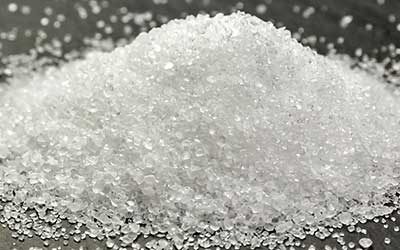Article by Beth Hubrich, R.D., and Lyn O’Brien Nabors
July 18, 2006
Read the article in it’s original location here.
In an effort to clarify the physiological impact of carbohydrates, the glycemic index (GI) concept was developed and published in 1981 as “Glycemic Index of Foods: a Physiological Basis for Carbohydrate Exchange” in the American Journal of Clinical Nutrition. The GI is a means of classifying carbohydrate-containing foods based on their potential to increase blood glucose. The initial objective was to provide improved advice to people with diabetes regarding their carbohydrate intake. During the last 20 years, research has been undertaken to evaluate the usefulness of GI. The glucose response to foods inherently varies from person to person and according to the context in which the food is consumed. Reproducible and consistent GI measurements are possible when undertaken in accordance with established methodology. The debate continues as to the usefulness and consistency of GI.
Professor Jennie Brand-Miller and colleagues at the University of Sydney, Australia, have developed a center for the measurement of GI, and tables have been published ranking over 1,200 foods by GI, including pure carbohydrates and commercial products. Although use of GI remains controversial, its acceptance is increasing, especially in Europe and Australia. In the United States, GI has gained less acceptance. For example, one of the criticisms of GI is that it measures the impact of individual foods and does not necessarily consider the amount eaten or foods in the context of an overall diet.
GI measures effects of carbohydrates with respect to their ability to raise blood glucose and compares this value with blood glucose response to either white bread or glucose itself. Glycemic load (GL), introduced in 1997, measures the blood glucose response to a specific weight of a given food. GL, therefore, provides a measure of total glycemic response to a food or meal. It is calculated by multiplying the amount of carbohydrate contained in a serving size (weight in grams or volume in milliliters) by the GI value of that food divided by 100.
Simply stated, the glycemic response to a food is a measure of the impact of a food on blood sugar. Foods with rapidly hydrolyzed and absorbed carbohydrates generally have a fast and high impact on blood sugar, resulting in the highest glycemic indexes. Slowly or incompletely digested carbohydrates have low glycemic indexes. In these cases, glucose is released gradually into the blood, and the blood sugar response is slow and steady.
In recent years, numerous products bearing terms such as “net carbs,” “impact carbs,” “low GI,” etc., on packaging have appeared on grocery shelves. This information appears outside the Nutrition Facts Panel, as these terms are not approved by FDA. Food manufacturers also place on the product package a statement indicating that only the “net carbs” or “impact carbs” affect blood glucose. Such products have increased consumer awareness of glycemic response.
Clinical significance of GI
Health problems related to being overweight are becoming the major health concern of the industrialized world. The World Health Organization and Food and Agriculture Organization of the United Nations (WHO/FAO) have stated that, globally, overweight is a bigger problem than undernourishment. In “Carbohydrates in Human Nutrition,” they recommended that people in industrialized countries base their diets on low-GI foods to prevent most common diseases of affluence.
High-glycemic foods may stimulate a high insulin demand that, in turn, can lead to postprandial hypoglycemia, which may be implicated in triggering hunger. Lower-glycemic foods usually provoke less insulin demand and less possibility of hypoglycemia. Hence, lower-glycemic foods may help consumers to eat fewer calories. It is important to note, however, that the relationship between GI and insulin demand is not always linear, and various components of the food can modify insulin response relative to glycemic response. Also, the glycemic response of individual foods and ingredients is influenced by the presence of other foods, processing conditions, etc.
The clinical significance of GI remains the subject of intense debate. However, it is clear that the rate and the amount of carbohydrate absorption after a meal have significant effects on postprandial hormonal and metabolic responses. The habitual consumption of high-GI foods may increase risk factors associated with obesity, type 2 diabetes and heart disease. Conversely, the consumption of foods that elicit lowglycemic responses may help to reduce such risk factors. GL, as defined above, may be a better predictor of likely health outcomes than GI, per se.
In July 2002, the American Journal of Clinical Nutrition published a special supplement that reviewed the history of GI, the current status of knowledge and recommendations for future studies.
This review featured an overview of GI’s implications in health and disease, including discussions relative to type 2 diabetes, obesity and heart disease. In conclusion, a critique argued that insufficient data exists on which to base dietary advice for the achievement of disease-risk reduction.
From this review, it is apparent that great effort has been applied to understanding the role of dietary carbohydrates in human health and disease risk. While there is no definitive proof that reducing glycemic impact will prevent disease on an individual basis, epidemiological data, together with prospective and intervention studies, suggest that reducing the glycemic effect of the diet may reduce disease risk. There are no contraindications, other than that consumers may have difficulty in understanding what action they need to take in order to reduce glycemic challenge.
Recent meta-analyses
During the last year, several metaanalyses have been published linking glycemic response to biomarkers of disease risk. One reviewed 14 randomized controlled studies, which considered the role of low-glycemic diets in the management of diabetes. The studies involved a total of 356 subjects and lasted from 12 days to 12 months. The low- GI diets reduced glycated hemoglobin (HbA1C) by 0.43 percentage points compared to high-GI diets. HbA1C is a well recognized biomarker of glucose tolerance. The authors’ overall conclusion is that low-GI foods have a small but clinically useful effect, equivalent to pharmacological agents.
Another meta-analysis reviewed international nutrition recommendations with special emphasis on carbohydrate and fiber. The authors also concluded that there is a role for reducing the glycemic response of the diet and recommended that GI information should be incorporated into exchanges and teaching material for individuals with diabetes.
In a review of 16 randomized controlled trials published between 1981 and 2003, researchers found that low-GI diets significantly reduced fructosamine by 0.1 mmole per liter, HbA1C by 0.27%, total cholesterol by 0.33 mmole per liter, and tended to reduce LDL cholesterol in people with type 2 diabetes by 0.15 mmole per liter compared with high-GI diets. No changes were seen in HDL cholesterol and triacylglycerols. Their findings support the use of GI as a scientifically based tool to enable selection of carbohydrate-containing foods to reduce total cholesterol and improve metabolic control of people with diabetes. There was only limited data on healthy individuals.
One review of the evidence for low- GI diets in relation to coronary heart disease identified 15 studies meeting strict inclusion criteria. There was some (limited) evidence showing a relationship between low-GI diets and lower total cholesterol (compared to high-GI diets). A small reduction in HbA1C was seen after 12 weeks, but not after five weeks. The researchers concluded that more studies of at least 12 weeks duration are needed.
GI and satiety
A growing number of studies suggest that reducing the glycemic impact of the diet may help consumers eat fewer calories, although not all investigators and reviewers reach the same conclusion. Studies undertaken include short-term assessments using visual scales and ad libitum food intake, and long-term studies focusing on weight loss.
Two recent papers addressed the question of whether obese patients should be counseled to follow a low-GI diet. In one favorable review, the authors noted that the reduction in fat intake widely advocated in the prevention and treatment of obesity has the potential to encourage compensatory increases in the consumption of high-GI carbohydrates. Short-term feeding studies generally show an inverse association between GI and satiety. Mediumterm clinical trials show less weight loss on high-GI/GL diets compared to low- GI/GL diets. Epidemiological analyses link GI to multiple cardiovascular disease (CVD) risk factors and development of CVD and type 2 diabetes. Physiologically oriented studies in humans and animal models provide support for a role of GI in disease prevention (risk reduction) and treatment.
Another author concluded that obese patients should not be counseled to follow a low-GI diet, noting that low GI is recommended in the management of diabetes. A systematic review was undertaken of intervention studies comparing high- and low-GI foods and diets on appetite, food intake, energy expenditure and body weight. Of 31 short-term studies, low GI was associated with greater satiety, or reduced hunger, in 15; no difference was seen in 16 (of which two showed greater satiety with high GI). Low-GI foods reduced ad libitum food intake in seven studies, but not in eight. In 20 longer-term studies, weight loss occurred in four low-GI and two high-GI trials, but it should be noted that many of the diets were isocaloric.
It must be acknowledged that the impact of food intake on weight management is not an exact science, and it is necessary to review the totality of available data before reaching conclusions. At this time, the main body of information linking glycemic response to weight control does seem to favor a diet reduced in glycemic response, compared to our current norm.
The European perspective
There is growing awareness in Europe of the concept of GI among healthcare professionals and consumers. The objective is to improve understanding of glycemic control. Media citations have become frequent, particularly in the United Kingdom, Germany and Scandinavia. The following extract from “Slimmer Start to the Day,” which appeared in the Nov. 4, 2003 Daily Mail, is typical:
“Experts at Oxford Brookes University calculated the glycemic index (GI) of foods by comparing the rise in blood glucose after eating different types. They studied children aged 9 to 12 and found those who had a low-GI breakfast ate more moderately for the rest of the day. But those given high-GI breakfasts were more likely to be hungry by lunchtime.”
In the United Kingdom, major retailers have launched intensive campaigns to raise public awareness of the value of reducing glycemic response. Products are routinely labeled “low GI,” “medium GI” or “high GI” based on Brand-Miller’s definitions.
To date, there is no harmonized legislation in Europe relating to nutrition and health claims on food products. However, the European Commission (EC) proposal for a Regulation on Nutrition and Health Claims, COM (22) 424 Final, has been adopted by the EC and is currently under consideration by the European Parliament and Council of Ministers. This proposal does not currently include mention of GI as a specific nutrition claim, although comparative claims are permitted, provided that a 30% change is seen from typical products in a given category. There is a provision for including new claims at a later date.
The National Food Administration of Sweden has endorsed labeling foods with the claim, “for a healthy blood glucose control,” based on their potential to slow glucose uptake.
Recently, BBC News ran a feature on GI with the headline “Diet Craze Good for the Heart.”
The U.S. perspective
Health professionals in the United States overall have not accepted the concept of GI reduction. Reasons cited include lack of definitive proof; the dangers of people with diabetes changing from traditional carbohydrate exchange routines; and questions as to how dietitians might recommend the concept to their clients.
The debate continues, and there are some signs of growing acceptance of GI. For example, the Food and Nutrition Board of the Institute of Medicine of the U.S. National Academy of Sciences recently concluded: “There is a significant body of data suggesting that more slowly absorbed starchy foods which are less processed, or have been processed in traditional ways, may have health advantages over those which are rapidly digested and absorbed. These foods have been classified as having a low GI and reduce the glycemic load of the diet. Not all studies of low GI or low glycemic load diets have resulted in beneficial effects, however, none have shown negative effects. There are also theoretical reasons at a time when populations are increasingly obese, inactive and prone to insulin resistance that dietary interventions that reduce insulin demand may have advantages. In this section of the population, it is likely that more slowly absorbed carbohydrate foods and low glycemic load diets will have the greatest advantage. … However, the principle of slowing carbohydrate absorption, which may underpin the positive findings made in relation to GI, is a potentially important principle with respect to the beneficial health effects of carbohydrates. Further research in this area is needed.”
The American Diabetes Association (ADA) published a statement in Sept. 2004, concluding that: “At this time, there is insufficient information to determine whether there is a relationship between glycemic index or glycemic load of diets and the development of diabetes. Prospective randomized trials will be necessary to confirm the relationship between the type of carbohydrate and the development of diabetes. The relative importance of the glycemic index or load of the diet to the development of obesity will also need to be considered, as excess body fat is the single most important determinant of type 2 diabetes.”
In Jan. 2005, the ADA published a position statement on “Standards of Medical Care in Diabetes.” Among its recommendations for medical nutrition care for people with diabetes, ADA states: “Both the amount (grams) of carbohydrate as well as the type of carbohydrate in a food influence blood glucose levels. Monitoring total grams of carbohydrate, whether by use of exchanges or carbohydrate counting, remains a key strategy in achieving glycemic control. The use of the glycemic index/glycemic load can provide an additional benefit over that observed when total carbohydrate is considered alone.”
The Joslin Diabetes Center and Joslin Clinic have developed “Clinical Nutrition Guideline for Overweight and Obese Individuals with Type 2 Diabetes, Prediabetes or at High Risk for Developing Type 2 Diabetes.” These guidelines state: “Reduction of the quality (glycemic index, GI) and quantity (glycemic load, GL) of carbohydrate choices is essential for blood glucose control. The GI/GL concept is an important factor that patients should apply in their daily selection of carbohydrates foods.”
| Table 1: Relative Sweetness, Caloric Availability and Glycemic Response of Selected Bulk Sweeteners Compared to Glucose, Sucrose and Fructose | |||
| Bulk Sweetener | Sweetness vs. sucrose | Kcal/gram | Glycemic response vs. glucose at 100 |
| Glucose | 0.7 | 4 | 100 |
| Sucrose | 1 | 4 | 65 |
| Fructose | 1.4-1.8 | 4 | 19 |
| Tagatose | 1 | 1.5 | 3 |
| Erythritol | 0.6-0.7 | 0.2 | 0 |
| Isomalt | 0.5-0.6 | 2.0 | 2 |
| Lactitol | 0.3-0.4 | 2.0 | 3 |
| Maltitol | 0.8-0.9 | 2.1 | 34 |
| Mannitol | 0.5 | 1.6 | <5 |
| Sorbitol | 0.6 | 2.6 | <5 |
| Xylitol | 1 | 2.4 | 8 |
| Polydextrose | 0 | 1 | <7 |
| Inulin | 0 | 1.5 | 4 |
| Resistant maltodextrin | 0.1 | 4* | 5 |
| Resistant starch | Low | 2 | 0+** |
| * Resistant maltodextrin is reduced in calories, but 4.9 kcal per gram is used for regulatory purposes in the United States. In Japan, the caloric value is 0.5 kcal per gram. | |||
| ** The GI of resistant-starch ingredients depends on the actual resistant starch content. | |||
USDA, which is responsible for meat and poultry products, has stated that it will not object to the use of statements that do not expressly state or imply a specific level of carbohydrate in a product (e.g., “Carb Conscious” and “Carb Wise”), nor will it object to terms such as “Net Carbs,” “Effective Carbs” and “Net Impact Carbs” when used in a truthful and not misleading manner. The document can be found at: www.fsis.usda.gov/oppde/larc/policies/carblabel.htm.
Several petitions relating to carbohydrate labeling are pending before FDA. In April 2005, FDA announced it would be conducting an experimental study of carbohydrate content claims on food labels. The purpose of the study is to help enhance FDA’s understanding of consumer response to carbohydrate content claims on food labels and to assist the agency in responding to the pending petitions on carbohydrate labeling (Federal Register, 2005; 70(67):18,032-18,034). FDA has not yet proposed any labeling related to the carbohydrate content of food.
GI acceptance elsewhere
Australia is leading the way with a GI logo for use on products accredited by the University of Sydney (see www.glycemicindex.com). In order for accreditation, a product must comply with nutrient profiles specified by the University. South Africa has also widely adopted GI labeling, and the GI Foundation has developed an interesting logo program encompassing both GI and fat content (see www.gifoundation.com). In Japan, there is growing awareness among healthcare professionals and food manufacturers, and glucose attenuating properties of fiberbased products are being promoted to consumers.
Role of specialty carbohydrates
Sugar alcohols (polyols) such as lactitol, xylitol, isomalt, erythritol and maltitol have a low glycemic effect, as do fructose, polydextrose, resistant starches and dietary fiber. These ingredients are used extensively to completely or partially replace sucrose, glucose and high-GI polysaccharides such as starch and maltodextrin in a wide range of processed foods, including dairy products, baked goods and confectionery. The glycemic responses and other properties of a range of carbohydrates are summarized in Table 1. It should be noted that these carbohydrates may alter glycemic response but not glycemic index, according to the strict definition.
Carbohydrates differ physiologically in that some are hydrolyzed and absorbed from the small intestine and are then metabolized in the body tissues (e.g., glucose, fructose, sucrose, cooked starch); some are incompletely hydrolyzed and/or absorbed and metabolized (e.g., lactose, isomalt, sorbitol, xylitol); some are absorbed, not metabolized and excreted via the urine (e.g., erythritol, mannitol); some pass through the small intestine unchanged and are fermented completely or partially by gut bacteria (e.g., polydextrose, pectin, fructo-oligosaccharides, inulin, resistant maltodextrin, resistant starch); and some pass through the digestive tract unchanged and are barely fermented (e.g., cellulose).
Definitive studies specifically addressing the role of low-glycemic carbohydrates in disease risk reduction are few. A recent review of the health potential of polyols as sugar replacers places emphasis on low-glycemic properties. The same author also presented a meta-analysis of relevant studies, focusing on the impact of GI (or, strictly speaking, glycemic response) on glycated proteins, particularly HbA1C, at the 2005 Leatherhead Food International Forum, Surrey, England.
Based on data linking HbA1C to cardiovascular disease incidence, he concluded that a reduction in glycemic carbohydrate equivalent to 30 grams of glucose per day could correlate with a 30% reduction in cardiovascular disease risk. This reduction should be achievable by most consumers, and specialty carbohydrates could assist.
Challenges and opportunities
In time, the scientific community may conclude that overall insulin demand is a key determinant of disease risk. This, in turn, largely correlates with the glycemic impact of the diet. There are exceptions, but overall glycemic impact remains a useful marker of physiological challenge. Traditionally, GI has been used to compare only “available” carbohydrates where “available” means “absorbed into the bloodstream in the upper gastrointestinal tract and metabolized.” Glucose, white bread and rice have typically been used as standards, with current preference for glucose as it is easier to define. Currently, GI is the parameter that is increasingly being recorded on food labels and promoted to consumers. If the traditional definition of GI prevails, consumers would not gain a full impression of how to reduce the glycemic impact of their diet. Some foods, such as carrots, have a high GI but low glycemic load.
Certainly it is not realistic for consumers to understand the many different terms associated with the glycemic properties of foods. Given that only one term is likely to reach the public’s perception, it is important that this term is defined in such a way that it has the most relevance for consumer health. One researcher who introduced the term “Glycemic Glucose Equivalents” recently discussed this point and argued for the extension of the GI concept to foods. This may be a way forward that could benefit consumers. Indeed, the concept has recently been adopted by Atkins Nutritionals as the “Net Atkins Count,” and other recent reviews also exist.
Several popular books are raising consumer awareness of GI as a strategy for improved nutrition. Of these, “The Glucose Revolution” by Brand- Miller et al. is currently in its 3rd edition. Rick Gallup recently published “The GI Diet,” which makes a useful attempt at communicating the GI concept to consumers. However, GI should not be seen as a diet, but rather a strategy for improved nutrition that becomes a lifestyle choice. Consumers will only derive maximum benefit from GI if food labels can be devised that accurately convey the relevant information. In turn, legislators and regulators will only modify labeling if scientific substantiation has been achieved. All those involved acknowledge the need for additional studies to fully elucidate the impact of glycemic reduction on disease risk in healthy populations. The next step should be to undertake definitive studies to improve our knowledge in this area.
While definitive proof of the role of GI may be some way off, there is a case that, in the meantime, consumers should be given the necessary information and food choices to enable them to reduce the glycemic impact of their diet if they choose to do so. There is little downside to this approach.
With a reduction in the glycemic impact of the diet, a reversal in the trend toward lifestyle-related diseases may be observed. It has been estimated that the glycemic challenge of our diet today is typically 10 times as high as it was pre-industrial revolution, and it is easy to imagine that our bodies have found it difficult to adapt.
Beth Hubrich, R.D., is executive director of the Calorie Control Council and serves as director of health and nutrition communications for CaloriesCount.com, the Council’s online dieting toolkit. Lyn O’Brien Nabors is president of the Calorie Control Council and has been with the Council for over 25 years. To view the bibliography for this article, go to
www.foodproductdesign.com.
References
American Diabetes Association (2005) Standards of Medical Care in Diabetes, Diabetes Care, Volume 28, Supplement 1
Anderson J, Randles K, Kendall C, Jenkins D (2004) Carbohydrate and Fiber Recommendations for Individuals with Diabetes: A Quantitative Assessment and Meta-Analysis of the Evidence. Journal of the American College of Nutrition, Vol. 23, No. 1, 5-17
Anon (1997), Carbohydrates in Human Nutrition. Report of a Joint FAO/WHO Expert Consultation. Rome, 14-18 April 1997
Anon (2002) Dietary Reference Intakes for Energy, Carbohydrates, Fiber, Fat, Protein and Amino Acids (Macronutrients) www.nap.edu/openbook/0309085373/html, The National Academy of Sciences
Brand-Miller J, Foster-Powell K and Colagiuri S (2003) The Glucose Revolution: The Glycemic Solution for Optimum Health. ISBN 0733615007. Published by Hodder Headline, Australia
Brand-Miller J, Hayne S, Petocz P, Colagiuri S (2003) Low-Glycemic Index Diets in the Management of Diabetes. Diabetes Care, Volume 26, Number 8, August 2003
Brand-Miller, J, Holt SHA, Pawlak DB and McMillan J (2002) Glycemic index and obesity. Am J Clin Nutr (suppl), 281S-285S
Brouns F, Bjorck I, Frayn KN, Gibbs AL, Lang V, Slama G, Wolever TM (2005) Glycaemic index methodology. Nutrition Research Reviews 18, 145-171
Food and Drug Administration. Agency Information Correction Activities; Proposed Collection Comment Request–Experimental Study of Carbohydrate Content Claims on Food Labels. Federal Register, Vol. 70, No. 67, Friday, April 8, 2005, 18032-34
Foster-Powell K, Holt SHA and Brand-Miller JC (2002) International table of glycemic index and glycemic load values: 2002. Am J Clin Nutr 76, 5-56
Gallup R (2003) The GI Diet – Virgin Books, LondonW6 9HA, ISBN 0 7535 0775 7
Henry, CJK et al. (2005a) Glycaemic index values for commercially available potatoes in Great Britain: 2005. Br J Nutr 94, 917-921
Henry, CJK et al. (2005b) Glycaemic index and glycaemic load values of commercially available products in the UK: 2005. Br J Nutr 94, 922-930
Jenkins DJ, Wolever TM, Taylor RH, et al. (1981) Glycemic index of foods: a physiological basis for carbohydrate exchange. Am J Clin Nutr 34, 362-6
Jenkins DJA, Kendall CWC, Augustin, LSA, Francheschi S, Hamidi M. Marchie A, Jenkins AL and Axelsen M (2002) Glycemic index: an overview of implications in health and disease. Am J Clin Nutr (suppl), 266S-273S
Kelly S, Frost G, Whittaker V, Summerbell C (2004) Low glycaemic index diets for coronary heart disease. The Cochrane Library 2004, Issue 4
Leeds AR (2002) Glycemic index and heart disease. Am J Clin Nutr (suppl), 286S-289S
Livesey G (2005) Unpublished data. Presented at Leatherhead Food International Forum, 17 May
Livesey, G (2003) Health potential of polyols as sugar replacers, with emphasis on low glycaemic properties. Nutrition Research reviews, 16, 163-191
Ludwig DS and Eckel RH (2002) The glycemic index at 20 y. Am J Clin Nutr (suppl): 264S-5S
Miller-Jones (2002) Contradictions and Challenges: A Look at the Glycemic Index http://www.wheatfoods.org/pdfs/wfc_gi_white_paper.pdf, Wheat Foods Council, USA
Monro J (2003) Redefining the Glycemic Index for Dietary Management of Postprandial Glycemia, J Nutr 133, 4256-4258
Okuma K and Matsuda I (2002) Indigestible fractions of starch hydrolysates and their determination method. J Appl Glycosci, 49(4), 479-485
Opperman A, Venter C, Oosthuizen W, Thompson R, Vorster H (2004) Meta-analysis of the health effects of using the glycaemic index in meal planning. British Journal of Nutrition, 92, 367-381
Pawlak D, Ebbeling C, Ludwig D (2002) Should obese patients be counseled to follow a low-glycaemic index diet? Yes. Obesity Reviews 3, 235-243
Pi-Sunyer FX (2002) Glycemic index and disease. Am J Clin Nutr (suppl), 290S-298S
Proposal for a Regulation of the European Parliament and of the Council on Nutrition and Health Claims Made on Foods. (2003) http://europa.eu.int/eur-lex/en/com/pdf/2003/com2003_0424en01.pdf, 4
Raben A (2002) Should obese patients be counseled to follow a low-glycaemic index diet? No. Obesity Reviews 3, 245-256
Sentko A (2004) The Low-Glycemic Concept. The Manufacturing Confectioner, June 2004, 73-83
Sheard NF, Clark NG, Brand-Miller JC, et al. (2004) Dietary carbohydrate (amount and type) in the prevention and management of diabetes. A statement of the American Diabetes Association. Diabetes Care, 27(9), 2266-2271
Tsuji K and Gordon D (1998) Energy value of a mixed glycosidic linked dextrin determined in rats. J Agric Food Chem, 46, 2253-2259
Willett W, Manson J and Liu S (2002) Glycemic index, glycemic load, and risk of type 2 diabetes. Am J Clin Nutr (suppl), 274S-280S
Terminology and methodology
There are a number of definitions relevant to the glycemic properties of foods. These include:
Glycemic index (GI): The incremental area under the blood glucose response curve (AUC) of a 50 gram (or 25 gram) available carbohydrate portion of a test food expressed as a percent of the response to the same amount of carbohydrate from a standard food (normally glucose) taken by the same subject.
Glycemic load (GL): GI multiplied by the carbohydrate content of a typical serving of the food.
Available carbohydrate: Carbohydrate absorbed into the blood from the small intestine and metabolized.
Carbohydrate by difference: In the United States, carbohydrate is calculated as the total weight of food less protein, fat, moisture and ash. In Europe, fiber is considered separate from carbohydrates.
Glycemic glucose equivalents: The weight of glucose in grams that would be equivalent to a given amount of food in its glycemic effect.
Glycemic effect, glycemic response, glycemic impact, glycemic challenge: These terms are not formally defined, but generally refer to the changes that happen to blood glucose after consumption of a carbohydrate-containing food.
Related Articles
Where to Buy Xylitol Gum?
How often do you chew gum? It’s a habit that a lot of people do multiple times a day. Chewing gum is often a stress reliever, and can help curb cravings. It’s also the perfect solution for after meals, leaving your mouth feeling and smelling...
Xylitol vs Stevia? What’s the Better Sugar Alternative?
A common question that's asked is, Xylitol vs Stevia? What should you choose for a sugar alternative? What is Stevia? Stevia comes from the Stevia rebaudiana plant, which is native to Paraguay, but can now be found around the world. The...
3 Desserts that Actually Help You Avoid the Dentist
Sugar Free Dessert Recipes That Can Help You Avoid the Dentist Just because you're living a sugar free lifestyle doesn't mean you have to ignore your sweet tooth and give up great tasting recipes. Find more scrumptious sugar free desserts and...
15 Facts About Diabetes
There are a lot of facts about diabetes, but you probably weren't aware of these 15. You might be wondering why a xylitol website is talking about diabetes. Well we support a healthy sugar free lifestyle, and encourage readers to choose...
Triclosan Banned From Soaps, But Not Toothpaste
In September, the Food and Drug Administration placed a ban on soaps and certain antibacterial chemicals which contain 19 different chemicals, one of them being triclosan. The FDA has given companies one year to remove the chemicals from their...
If Not Sugar, Then What? Your Best Sugar Alternatives
Given the new information about the sugar industry paying researchers to downplay the role sugar has in heart disease, finding sugar alternatives to sweeten our food with seems to be an important task. Finding an alternative to sugar isn’t...










